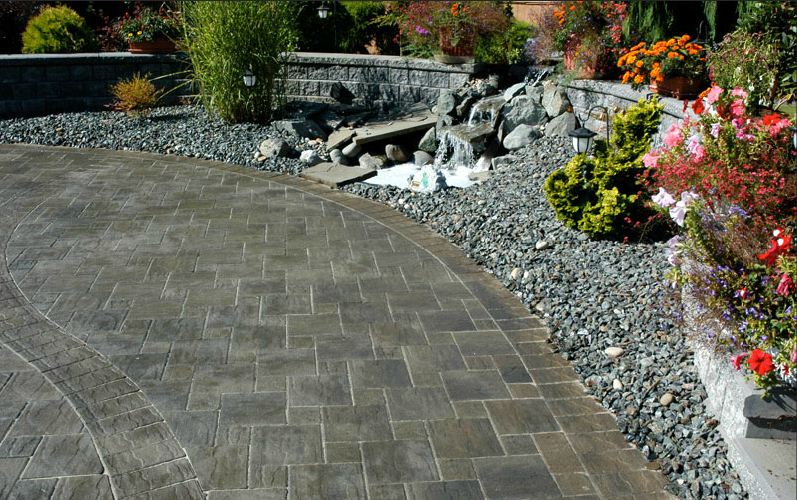When planning a new patio, walkway, or driveway using natural stone pavers, one common question we hear is: “Does water drain between pavers?” The short answer is yes—but the full story depends on the type of installation, materials used, and the condition of your base and joints.
In this post, we’ll explore how water drainage works with pavers, why it’s important, and how to ensure your natural stone paving project stays functional and beautiful for years to come.
How Water Drains Between Pavers
Installers typically place natural stone pavers with small gaps (called joints) between each piece. They often fill these joints with sand, polymeric sand, or gravel—materials that allow water to pass through and help prevent pooling or flooding on the surface.
Here’s how it works:
-
Rainwater hits the surface of the pavers
-
Water flows into the joints between pavers
-
From there, it filters down into the compacted base layer below (usually crushed stone or gravel)
-
Excess water continues draining into the soil beneath
Moreover this type of drainage system is often referred to as permeable or semi-permeable, depending on the materials used and how tightly the joints are packed.
Why Drainage Is Important
Proper drainage between pavers isn’t just about preventing puddles—it’s also essential for the long-term health of your hardscape. Without effective drainage:
-
Water can pool on the surface, creating slippery, unsightly conditions.
-
Moisture can weaken the base, leading to shifting, sinking, or cracking over time.
-
Freeze-thaw cycles can cause serious damage in colder climates if water gets trapped under the surface.
By allowing water to drain freely, a well-installed natural stone paver system reduces these risks while also promoting better soil health and reducing runoff.
Tips for Maximizing Drainage
To make sure your paver installation drains properly:
-
Use a proper base layer – A compacted gravel base allows water to flow through easily and prevents settling.
-
Choose jointing material carefully – Polymeric sand can harden and resist erosion, while open-graded gravel joints provide maximum permeability.
-
Maintain joint integrity – Over time, wind and rain may displace joint filler. Refill as needed to preserve function and appearance.
-
Ensure the right slope – Even permeable systems benefit from a gentle slope (1-2%) to guide water away from structures.
Natural Stone Pavers: A Beautiful, Functional Choice – Does water drain between pavers
Natural stone pavers not only bring timeless beauty and durability to outdoor spaces—they also offer excellent water drainage when installed correctly. Whether you’re building a rustic garden path or a modern patio, understanding how water moves through and around your pavers can help you create a space that stands up to the elements with elegance.
Need help choosing the right natural stone for your project? Contact us today to speak with our experts or browse our selection of high-quality pavers designed to elevate your outdoor living space.

